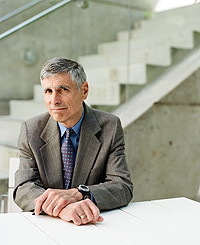
Leslie Williamson

Many physician-scientists of my generation cite reading Paul de Kruif’s 1926 classic, Microbe Hunters, as one of their formative experiences. That goes for me too. The book’s stories inspired us — from Antonie van Leeuwenhoek, the first man to view a microbe, to Paul Ehrlich, who put the idea of a “magic bullet” into practice with a treatment for syphilis. By the time I had finished the last chapter, the tales of those pioneering scientists had convinced me of the power of science to benefit the world.
But more important, perhaps, they whetted my curiosity about science. As I turned the pages, the mysteries of the microbial world and how they intersect with human lives opened before me. Looking back, the stories were filled with as many thrills as more recent works such as The Forgotten Plague, Frank Ryan’s history of TB, or The Ghost Map, Steven Johnson’s account of London’s 1854 cholera epidemic. Small wonder I became an infectious-disease researcher as well as a physician.
Physician-scientists, like those featured in this issue of Stanford Medicine, are the sleuths of the medical world. They’re also, unfortunately, an endangered species. In fact, the percentage of physicians who pursue research has been declining for decades — leaving proportionally fewer physicians to tease apart medical mysteries.
As the public debate over health-care reform roars ahead, the important role of the physician-scientist needs to be recognized. A health-care system that fails to support them will cease breaking new ground in preventing, diagnosing and treating disease. The forthcoming book, The Vanishing Physician-Scientist (ILR Press, 2009), edited by Andrew Schafer and including a chapter by me, addresses the wide range of challenges and potential solutions.
As for myself, after more than three decades as a physician and researcher, I am still amazed at the mysteries of medicine and more impatient than ever for answers.
The current H1N1 influenza pandemic is a perfect example of an evolving medical mystery. In March, when international health officials became aware of the outbreak, reports indicated a frighteningly high fatality rate in Mexico, where it began. But as the virus spread to the United States we saw a far lower apparent rate of deaths. Why the change?
Soon the virus migrated to the southern hemisphere and in June the World Health Organization declared a global pandemic, the first since the 1968 Hong Kong flu. Now, as we approach the traditional flu season, we have early indications that H1N1 will hit hard this winter. A presidential panel predicted in August that deaths could rise as high as 90,000, tripling rates from the regular seasonal flu. Will it reach the highest number? One thing is for sure: There will be some surprises, as the pathway of influenza always holds some secrets.
Secrets, mysteries and riddles are what this issue of Stanford Medicine is all about. The stories show physician-scientists unraveling some stubborn medical mysteries: Why do some hearts fail and not others? Why do autoimmune diseases strike women more often than men? How do you snare the chameleon of a killer known as mitochondrial disease?
Also in this issue, physician/mystery author Tess Gerritsen describes the craft of turning medical fact into mysterious fiction. And you’ll have your own opportunity to play Sherlock Holmes by solving the medical riddle posed by physician/author Abraham Verghese, senior associate chair of our Department of Medicine.
I hope you will enjoy our whodunit issue of Stanford Medicine.
Sincerely,
Philip A. Pizzo, MD
Dean
Stanford University School of Medicine
Carl and Elizabeth Naumann Professor, Pediatrics, Microbiology and Immunology


